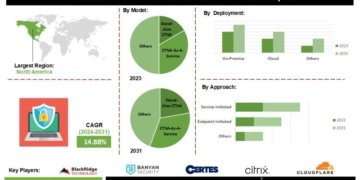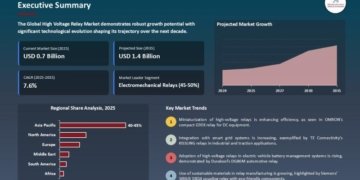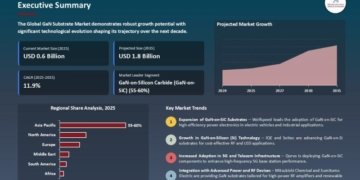Use code ONLINE30 to get 30% off on global market reports and stay ahead of tariff changes, macro trends, and global economic shifts
What Is the Expected CAGR for the Virtual Reality Shopping Market Through 2025?
In recent times, the market size of virtual reality shopping has experienced significant expansion. The market is projected to grow from $74.56 billion in 2024 to $95.69 billion in 2025, with a compound annual growth rate (CAGR) of 28.3%. The growth observed in the historic period could be linked to improvements in the shopping experience, integration with e-commerce, increased adoption of VR by consumers, brand engagement, and the competitive advantage provided.
What’s the Projected Size of the Global Virtual Reality Shopping Market by 2029?
The market size of virtual reality shopping is anticipated to witness spectacular growth in the ensuing years, escalating to a value of $264.97 billion in 2029 with a Compound Annual Growth Rate (CAGR) of 29.0%. The expansion foreseen in this period can be credited to elements like mobile vr experiences, social vr shopping, artificial intelligence-enabled personalisation, virtual try-on rooms, amalgamation with augmented reality, and eco-friendly and sustainable shopping practices. Significant trends during the projected period are likely to be technology advancements, social vr shopping, personalised and AI-based suggestions, virtual dressing rooms, and integration with online selling platforms.
View the full report here:
https://www.thebusinessresearchcompany.com/report/virtual-reality-shopping-global-market-report
Top Growth Drivers in the Virtual Reality Shopping Industry: What’s Accelerating the Market?
The anticipated growth of the virtual reality shopping market is linked to the upswing in the e-commerce industry. Essentially, the e-commerce industry involves online transactions and online retail, offering a plethora of goods and services for sale online. Virtual reality shopping refines this e-commerce process by submerging consumers in a virtual shop environment where they can scrutinize products and make educated purchasing decisions right at the comfort of their homes. Some noteworthy statistics come from the U.S. Department of Commerce which reported that the estimated retail e-commerce sales in the U.S. for the second quarter of 2023 were an unadjusted $269.5 billion. This denotes a 6.6% surge from the first quarter of the same year and a 7.7% increase in comparison to the second quarter of 2022. Thus, an upward trend in the e-commerce industry is fueling the virtual reality shopping market growth. On the virtual reality shopping market’s technological front, it is the growing acceptance and use of VR technology that’s anticipated to fuel the market’s expansion. VR technology, a computer-generated simulated 3D environment or experience that users can interact with, is transforming the shopping landscape by creating an immersive and engaging shopping experience. Customers can not only explore products but also virtually try them out, making well-informed purchasing decisions right from their homes. As reported by XR Today, a UK-based tech podcast company, nearly 57.4 million people in the U.S. owned VR headsets in 2020, a number expected to grow to 37.7 million in 2022. The increasing use of VR technology is, therefore, a key driver of the growth in the virtual reality shopping market.
Get your free sample here:
https://www.thebusinessresearchcompany.com/sample.aspx?id=13557&type=smp
What Trends Will Shape the Virtual Reality Shopping Market Through 2029 and Beyond?
Prominent corporations involved in the virtual reality commerce sector are employing strategic collaborations as a method to amplify their abilities and competitive edge. Strategic partnerships are a practice where companies make use of each other’s distinct strengths and assets to attain flexible benefits and success collectively. For example, Alo LLC, an American activewear and lifestyle brand, formed a strategic alliance with Obsess Inc., a US-based e-commerce platform, in February 2023. This partnership led to the creation of a virtual reality shopping platform with an experiential e-commerce platform. This virtual shop can be swiftly accessed through a desktop, mobile, or the Meta Quest 2 VR headset. This virtual location not only contains beauty and wellness tutorials but also enables an immersive digital shopping mechanism where customers can explore and buy Alo’s collections, engage with various interactive content, and design custom outfits.
What Are the Main Segments in the Virtual Reality Shopping Market?
The virtual reality shopping market covered in this report is segmented –
1) By Device: Gesture-Tracking Device (GTD), Head-Mounted Display (HMD), Projectors And Display Wall (PDW)
2) By Technology, Semi And Fully Immersive, Non-Immersive
3) By Component, Hardware, Software
4) By Application: Aerospace And Defense, Commercial, Healthcare, Enterprise, Other Applications
Subsegments:
1) By Gesture-Tracking Device (GTD): Handheld Gesture Controllers, Motion Sensing Gloves, Full-Body Gesture Tracking Systems
2) By Head-Mounted Display (HMD): Tethered HMD, Wireless HMD, Augmented Reality (AR) HMD
3) By Projectors And Display Wall (PDW): Large-Screen Projectors, Interactive Display Walls, 3D Projection Systems
Tailor your insights and customize the full report here:
https://www.thebusinessresearchcompany.com/customise?id=13557&type=smp
Which Top Companies are Driving Growth in the Virtual Reality Shopping Market?
Major companies operating in the virtual reality shopping market report are Amazon Inc., Alphabet Inc., Samsung Electronics Co. Ltd., Microsoft Corporation, JD.com Inc., Alibaba Group Holding Limited, Meta Platforms Inc., Target Corporation, Lowe’s Companies Inc., Best Buy Co. Inc., IKEA Group, Macy’s Inc., Adobe Inc., Wayfair Inc., eBay Inc., Pinterest Inc., PTC Inc., Unity Technologies Inc., Barco NV, HTC Corporation, EON Reality Inc., Ultraleap Ltd., Threekit Inc., Cappasity Inc., Newegg Inc., InContext Solutions Inc., Sixense Enterprises Inc., WorldViz Inc., Obsess VR Inc., Marxent Labs LLC
Which Regions Will Dominate the Virtual Reality Shopping Market Through 2029?
Asia-Pacific was the largest region in the virtual reality shopping market in 2024. The regions covered in the virtual reality shopping market report are Asia-Pacific, Western Europe, Eastern Europe, North America, South America, Middle East, Africa.
Purchase the full report today:
https://www.thebusinessresearchcompany.com/purchaseoptions.aspx?id=13557
“This Report Supports:
1.Business Leaders & Investors – To identify growth opportunities, assess risks, and guide strategic decisions.
2.Manufacturers & Suppliers – To understand market trends, customer demand, and competitive positioning.
3.Policy Makers & Regulators – To track industry developments and align regulatory frameworks.
4.Consultants & Analysts – To support market entry, expansion strategies, and client advisory work.”
Connect with us on:
LinkedIn: https://in.linkedin.com/company/the-business-research-company,
Twitter: https://twitter.com/tbrc_info,
YouTube: https://www.youtube.com/channel/UC24_fI0rV8cR5DxlCpgmyFQ.
Contact Us
Europe: +44 7882 955267,
Asia: +91 88972 63534,
Americas: +1 310-496-7795 or
Email: mailto:info@tbrc.info
Learn More About The Business Research Company
With over 15,000+ reports from 27 industries covering 60+ geographies, The Business Research Company has built a reputation for offering comprehensive, data-rich research and insights. Our flagship product, the Global Market Model delivers comprehensive and updated forecasts to support informed decision-making.
This release was published on openPR.


















